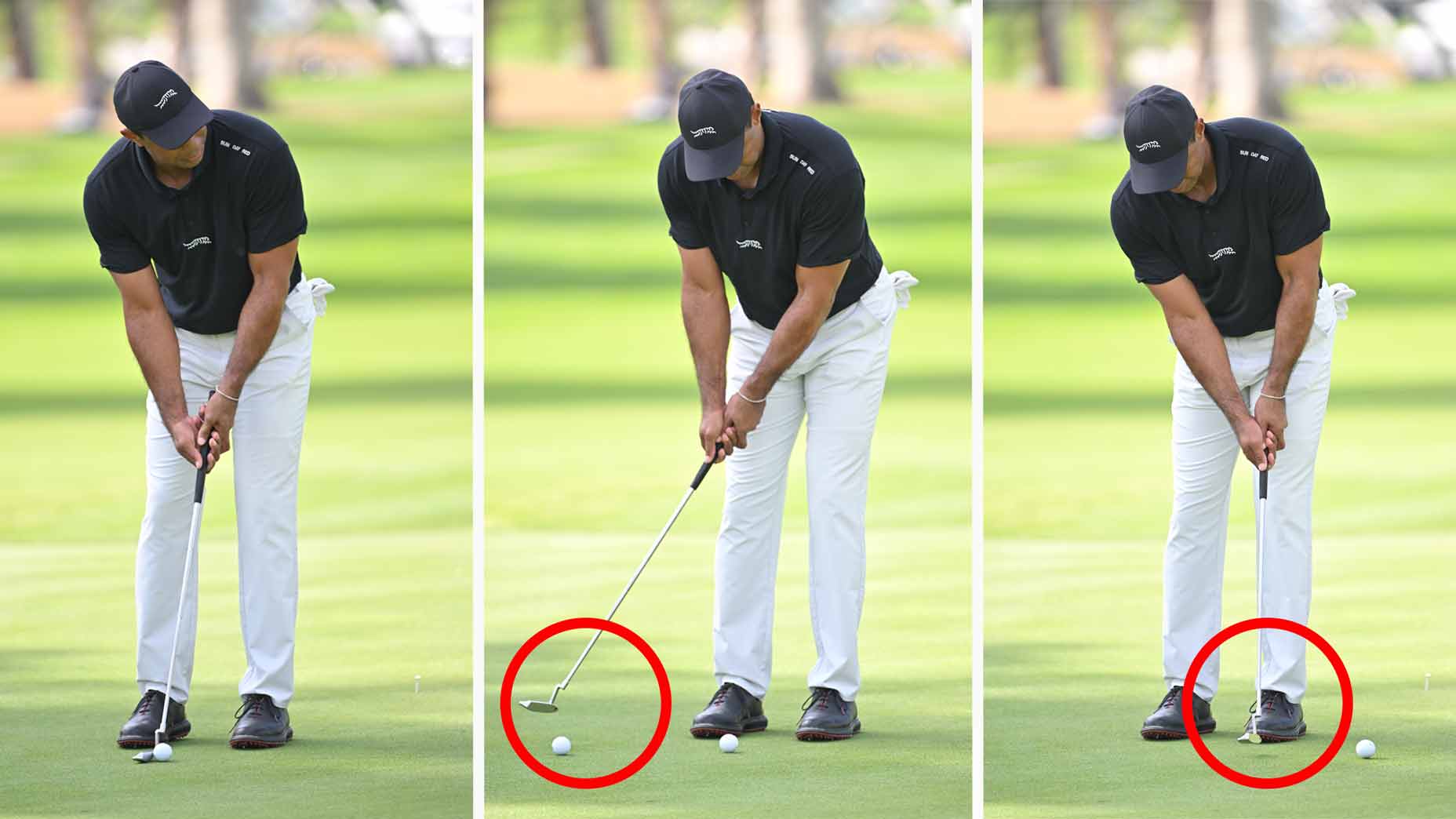Advancements in technology have revolutionized the way we practice and play golf. Data-driven insights allow instructors and players to break down every aspect of the game in great detail — which has resulted in some fascinating findings.
Instruction concepts that were once considered fundamental are now being re-examined and updated, thanks to innovations like launch monitors, pressure plates, 3D analysis and more.
A great example of this is how the putter release is taught.
In a recent video from GOLF Top 100 Teacher Chris Como, top putting coach Stephen Sweeney explains that many instructors and amateurs believe the toe of the putter should pass the heel in the through-stroke.
“That’s kind of the myth that’s been around for a long time,” Sweeney says.
On the release think vertical, not horizontal
Sweeney explains that it’s a concept that came about when we could only analyze the putting stroke with 2D cameras from a face-on angle — which gave the putter an appearance of a more horizontal release pattern.
These old putting evaluations showed that when players took the putter back, it was de-lofted and gave the appearance that the toe was going behind the putter. As they reached impact, Sweeney explains that the putter was re-lofted, which made it look like the toe and heel were squaring up.
“And then as they added loft to the putter, it appeared, from a 2D camera, that the toe passed the heel,” Sweeney says.
Thanks to advancements in technology, we now have a better understanding of what’s actually happening during the putting stroke — and what key elements to emulate from top putters in the game, such as Tiger Woods.
Sweeney explains that it’s not about the rotational release, but the vertical one. Rather than striving for a more horizontal, or around-the-body motion, players should think about letting their hands rise naturally through the stroke.
“So understanding how the putter is released properly and controlling shaft angle, will actually help control the clubface and control that release pattern,” Sweeney says.
If it worked for Tiger, it can work for you.







